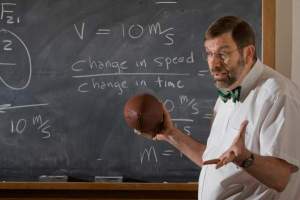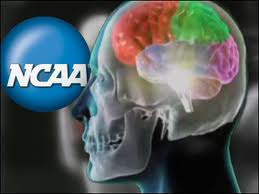If professional football players are really playing the game differently, the NFL correctly claims that concussion rates are 25 percent less; education and awareness campaigns must be working. The NFL data on injured reserve list players shows the significant decrease in the rate of player concussions. This news was recently promoted at the annual pre-Super Bowl health and safety news conference.
The retired NFL player lawsuits and media coverage promoted increased awareness and research into player education, injury and reporting. The 2014 season was the first in which NFL injury data was electronically collected from all of the teams in the league.
With the new methods for reporting there are more reports of injuries.
There has been a 15 percent increase in injury reporting in the 2014 season, up from last year. “We knew it was going to be up this year, because we transitioned to the electronic medical records,” Mack said in a telephone interview, echoing Miller’s explanation. “We can’t conclude the incidence of injuries is up. We know the reporting of injuries is up.[i]”
Among the data highlights, there were 59 concussions resulting from helmet-to-helmet or shoulder-to-helmet hits during the 2014 season. Last year’s number was just around twice that many. Educating players about how to avoid dangerous hits seems to lead to players avoiding head injuries.
“Players are changing the way they’re tackling,” NFL Senior Vice President of Health and Safety Policy Jeff Miller said. “They’re changing the way they play the game.[ii]”
Some claim reduced practice time and new safety protocols affect injuries and reporting.
At the end of the 2013 season, New England Patriots coach, Bill Belichick, suggested that a decrease in the allowed number of practices in both the regular season as well as preseason and offseason contributed to higher injury numbers.[iii] When the U.S. Congress examined NFL concussion policies, and thousands of retired players also criticized the league, the decision was made to implement new safety measures and reduce practice times.
Technology advances for monitoring players, on site game day neurologists, and protecting receivers from being hit by the crown of the helmet are all part of a collection of new methods the NFL is using to reduce head injuries and monitor players to make sure they are blocking and hitting appropriately.
Michael V. Favia & Associates represent clients with sports injuries. With offices conveniently located in the Chicago Loop, Northwest side and suburban meeting locations, you can schedule a meeting with an attorney at your convenience. For more about Michael V. Favia & Associates, please visit the firm’s website and feel free to “Like” the firm on Facebook and “Follow” the firm on Twitter.
[i] CBS New York: AP: NFL Claims Concussions Down 25 Percent. Jan. 29, 2015.
[ii] See HNi above.
[iii] See HNi above.




